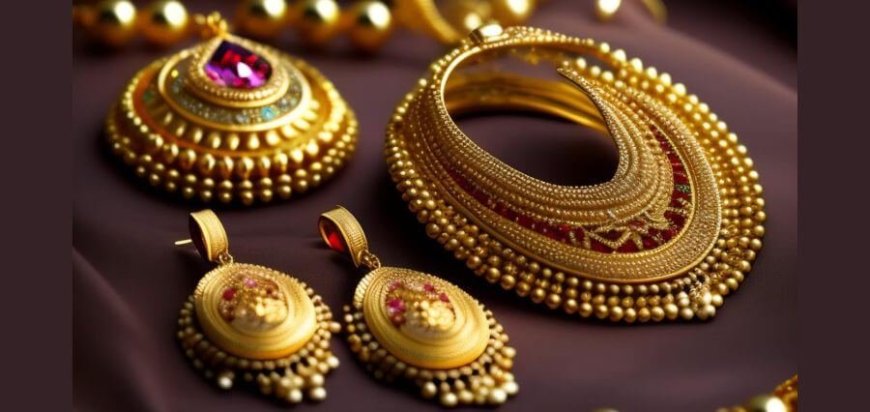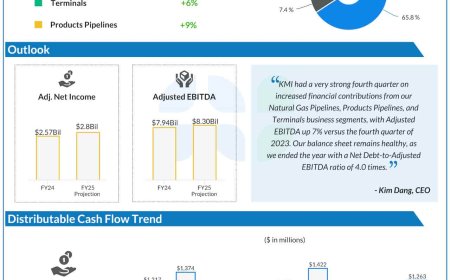Understanding Precious Metals: A Guide to Gold, Silver and Platinum Jewelry
Precious metals have been used in jewelry making for centuries, admired for their beauty, rarity, and durability. Whether in a timeless gold band, an intricate silver bracelet, or a sophisticated platinum necklace, these metals are the foundation of fine jewelry. This guide explores the unique qualities of gold, silver, and platinum, providing insights into what […] The post Understanding Precious Metals: A Guide to Gold, Silver and Platinum Jewelry appeared first on Insights Success.

Precious metals have been used in jewelry making for centuries, admired for their beauty, rarity, and durability. Whether in a timeless gold band, an intricate silver bracelet, or a sophisticated platinum necklace, these metals are the foundation of fine jewelry. This guide explores the unique qualities of gold, silver, and platinum, providing insights into what makes each metal special and how they contribute to the world of jewelry.
Gold: A Symbol of Wealth and Warmth
Gold has long been associated with luxury and permanence. Its rich, warm hue and resistance to tarnish make it a favorite for both classic and modern designs. Gold is highly malleable, allowing jewelers to create intricate details and complex patterns. However, because pure gold (24 karats) is soft, it is often alloyed with other metals like copper, silver, or zinc to enhance its strength and durability.
Types of Gold
- Yellow Gold: The most traditional form, yellow gold retains its natural color and is often alloyed with copper and silver. It’s a popular choice for engagement rings and heirloom pieces.
- White Gold: Created by alloying gold with palladium or nickel, white gold offers a sleek, contemporary look. It is often plated with rhodium for added shine and protection.
- Rose Gold: This metal’s pinkish hue comes from a higher copper content. Rose gold has gained popularity for its romantic and vintage appeal.
When selecting gold jewelry, consider its karat weight. Higher karat gold contains more pure gold but may be less durable than lower karat options. Reputable jewelry stores, such as J.F. Kruse Jewelers of St Cloud, provide expert guidance to help you choose the right gold for your needs.
Silver: Elegance in Simplicity
Silver has a timeless charm that appeals to a wide range of tastes and styles. Known for its bright, reflective finish, silver is a versatile metal that can complement casual or formal attire. It is also more affordable than gold or platinum, making it an accessible option for many buyers.
Sterling Silver
The most common form of silver used in jewelry is sterling silver, which consists of 92.5% pure silver and 7.5% other metals, typically copper. This alloy enhances the metal’s strength while maintaining its signature shine.
Caring for Silver Jewelry
Silver is prone to tarnish when exposed to air and moisture. Regular cleaning with a soft cloth or silver polish can help maintain its luster. Proper storage in anti-tarnish pouches or boxes is also essential to preserve its beauty over time.
Silver’s versatility extends to its compatibility with gemstones, making it a favorite for rings, necklaces, and earrings. Whether you’re looking for a minimalist piece or a bold statement accessory, silver jewelry offers endless possibilities.
Platinum: The Pinnacle of Luxury
Platinum is the rarest and most durable of the precious metals, often considered the ultimate choice for fine jewelry. Its natural white sheen does not fade or tarnish, ensuring that platinum jewelry retains its brilliance for a lifetime.
Unique Properties
One of platinum’s defining characteristics is its density. This makes it heavier than gold or silver, adding a substantial feel to the jewelry. Its strength allows for secure settings, making it ideal for holding valuable gemstones like diamonds.
Hypoallergenic Benefits
Platinum is hypoallergenic, making it an excellent choice for individuals with sensitive skin. Its purity (usually 90-95% platinum) minimizes the risk of irritation, providing both comfort and elegance.
Investment Value
As one of the most precious metals, platinum holds significant investment value. Its rarity and durability make it a symbol of prestige and sophistication. Platinum jewelry often comes with a higher price tag, but its enduring quality justifies the cost.
Combining Metals: Mixed Metal Jewelry
In recent years, mixed metal jewelry has become a popular trend. Combining gold, silver, and platinum in a single piece creates a unique aesthetic that adds depth and contrast. Mixed metal designs are versatile, allowing wearers to match their jewelry with different outfits and other accessories.
This approach also highlights the craftsmanship of jewelers who blend metals seamlessly to create harmonious designs. For example, a two-tone gold and platinum ring can offer the warmth of gold with the durability of platinum, striking the perfect balance between beauty and function.
How Jewelers Shape Precious Metals
Transforming raw metals into exquisite jewelry requires skill, precision, and creativity. Here are some of the techniques jewelers use:
- Casting: Molten metal is poured into molds to create basic shapes. This technique allows for intricate designs and is often the starting point for custom pieces.
- Forging: Jewelers hammer and shape the metal to achieve the desired form. This traditional method requires both strength and finesse.
- Soldering: This process joins metal components together, ensuring structural integrity while maintaining a seamless appearance.
- Polishing: The final step in crafting, polishing enhances the metal’s shine and smoothness, giving it a flawless finish.
Jewelers, such as those at J. F. Kruse Jewelers, combine traditional techniques with modern technology to produce stunning creations that showcase the best qualities of each metal.
Ethical Considerations in Precious Metals
As sustainability becomes a priority for consumers, ethical sourcing of precious metals is gaining attention. Many jewelers now prioritize recycled metals and fair-trade gold to minimize environmental impact and support responsible mining practices.
By choosing ethically sourced jewelry, customers can enjoy their pieces with the confidence that their purchase aligns with their values. Stores that emphasize transparency in their sourcing, such as J. F. Kruse Jewelers, are setting a standard for ethical practices in the industry.
Caring for Precious Metal Jewelry
Proper care is essential to preserve the beauty and longevity of your jewelry. Here are some tips:
- Regular Cleaning: Use a gentle cleaning solution and a soft cloth to remove dirt and oils. Avoid abrasive materials that can scratch the metal.
- Storage: Keep jewelry in separate compartments or pouches to prevent scratches and tangling.
- Professional Maintenance: Periodic inspections by a jeweler ensure that settings are secure and any signs of wear are addressed promptly.
These practices help maintain the integrity of your jewelry, allowing you to enjoy it for years to come.
Conclusion
Gold, silver, and platinum each bring their unique qualities to the world of jewelry, offering something for every taste and occasion. Understanding the properties and care requirements of these metals empowers buyers to make informed decisions and appreciate the craftsmanship behind their pieces.
Whether you prefer the timeless appeal of gold, the elegance of silver, or the prestige of platinum, a trusted jeweler like J. F. Kruse Jewelers can guide you in finding or creating the perfect piece. By exploring the beauty and versatility of precious metals, you can discover jewelry that not only enhances your style but also holds lasting value and meaning.
The post Understanding Precious Metals: A Guide to Gold, Silver and Platinum Jewelry appeared first on Insights Success.











































